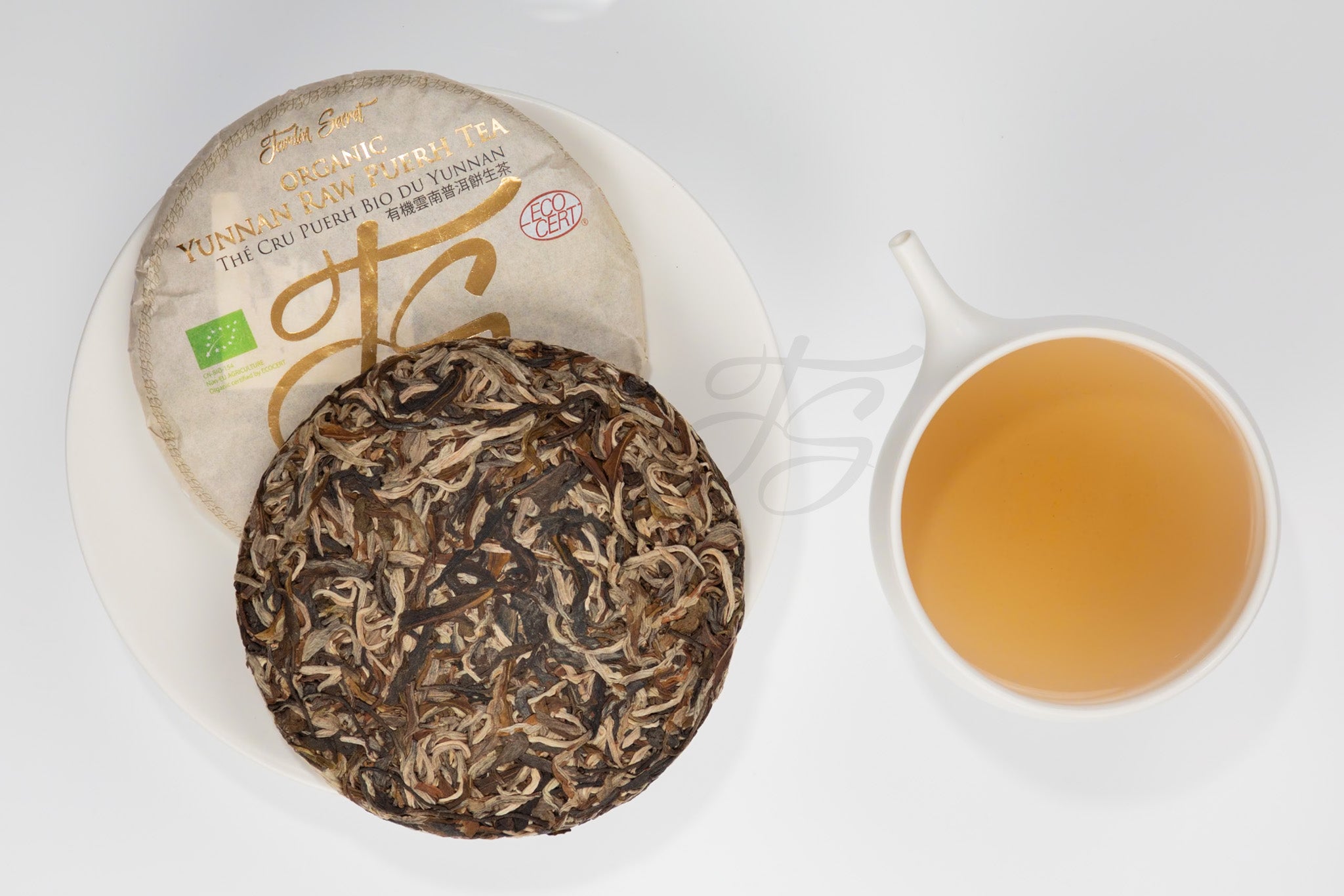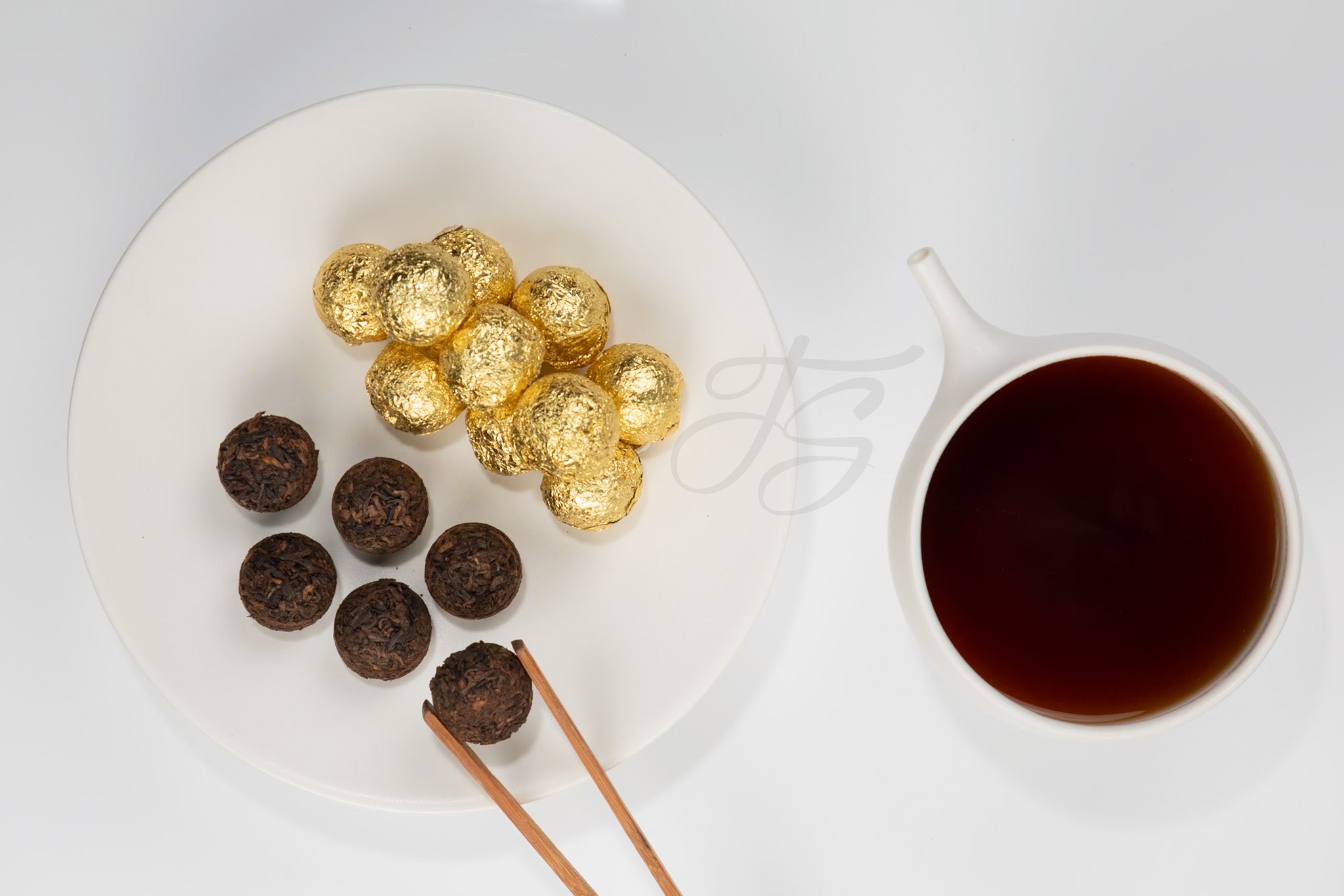Puerh Teas
When it comes to the historical stories of Pu'er tea, there are truly too many to tell, and it is impossible to finish! Chinese Yunnan Pu'er tea, as one of the traditional famous teas in China, has a long history and a unique development trajectory. Pu'er tea originated in Yunnan, and archaeological discoveries show that Yunnan has a history of tea tree cultivation of more than 3000 years, with the Bulang people in Yunnan offering tea as a tribute to their ancestors. The transitional ancient tea tree tea of Bangwei is an living fossil of ancient Pu'er people's cultivation and domestication of tea trees, witnessing the long-standing tradition of tea cultivation in the region. The production process and variety development of Pu'er tea can be traced back to the Tang Dynasty. During the Sui and Tang dynasties, tea entered the main range of Chinese beverages, and Pu'er tea in Yunnan even became a tribute to the imperial court, deeply loved by the royal family and nobles.
With the passage of time, the production and processing techniques of Pu'er tea continue to improve and develop. During the Ming and Qing dynasties, the processing methods of Pu'er tea gradually formed, evolving into two types: raw tea and aged tea (naturally fermented), creating a unique fermentation process. At the same time, as one of the main exports of Chinese tea, Pu'er tea began to be sold abroad, gradually expanding its influence. Today, Pu'er tea has become a famous Chinese tea, loved by tea lovers at home and abroad. Its unique taste and aroma, as well as its special fermentation process, make Pu'er tea an indispensable part of Chinese tea culture.
The production technology of Yunnan Pu'er tea has been continuously improved and perfected, leading to a constant improvement in the quality of tea. During the Tang and Song dynasties, Pu'er tea began to be one of the important trade commodities, quickly gaining a place in both domestic and international markets. With the spread and popularity of tea culture, Pu'er tea gradually became one of the representatives of Chinese tea leaves, highly favored by tea enthusiasts both domestically and internationally. Pu'er tea has played an important role in shaping the cultural and economic landscape of Yunnan Province.
The Tang Dynasty was prosperous, the Song Dynasty was flourishing, and tea culture became a popular custom nationwide. The most famous tea ceremony at that time was the Song Dynasty's tea ceremony art, and tea tasting competitions were very popular during the Song Dynasty.
During the Tang and Song dynasties, the large-scale tea-horse trade emerged between the inland (Central Plains) and the border areas (northern and northwestern regions), known as the historical "Tea-Horse Mutual Trade." At that time, the greatest enemy of the Central Plains regimes was the nomadic ethnic groups in the north and northwest. After several battles, it was discovered that one of the reasons for the strong combat power of the nomadic ethnic groups was their excellent warhorses. Their horses were not only numerous but also of superior breeds. Horses of the same age and breed in the nomadic areas excelled in speed and endurance compared to those in the Central Plains. Therefore, there was a high demand from the Central Plains for high-quality horses from the border regions. The people in the border regions mainly consumed beef and mutton, with limited varieties of vegetables. Gradually, they discovered that the tea purchased from the Central Plains had the effects of breaking down fats and enhancing the taste of milk. As a result, the people in the border regions developed a habit of drinking tea, and their demand for tea from the Central Plains continued to increase.
Therefore, both sides got what they needed, people in the border areas traded their "horses" for the "tea" from the Central Plains region. The people in the Central Plains region traded their local "tea" for the high-quality "horses" from the border areas. This trade form achieved the final balance of supply and demand, which is the earliest Tea-Horse Market. Subsequently, trade channels that catered to this trade form naturally emerged.
Yunnan Simao (Pu'er City) and Xishuangbanna are the main raw material production areas, while Pu'er (Simao) has become the processing and distribution center. During the Ming Dynasty, six ancient Tea Horse Roads were developed centered around Pu'er, with Pu'er tea being sold to mainland China, Tibet, Vietnam, Myanmar, Thailand, and transported to Hong Kong, Macau, Southeast Asia, and even Europe. After the 23rd year of the Guangxu reign (1897), France and Britain successively established customs in Simao, increasing the export of Pu'er tea.
In ancient times, with limited transportation methods, the "tea-horse caravan" became the transporter providing services for the exchange of "horse" and "tea" trade. With the expansion of the "tea-horse market", a series of ancient roads were explored and developed. As history evolved, people gradually referred to these routes as the "Tea-Horse Ancient Road". Along this long-standing ancient road, aged naturally fermented Pu'er tea emerged. Through time and natural fermentation, it emits a unique aged aroma. In the north of China, there is the Silk Road, and in the south, there is the Tea Horse Ancient Road.
Whenever I read the ancient poem "Tea Horse" by the Ming Dynasty writer Tang Xianzu, I am reminded of the horse’s caravan that once traveled on the "Tea Horse Ancient Road". It can be said that without the "Tea Horse Ancient Road", the world would not have the now popular "Pu'er Tea". The "Horses caravan culture" and "Pu'er culture" complement each other, allowing the fragrance of "Pu'er Tea" to waft over snow-capped mountains, grasslands, and rivers, lingering over the heads of every Pu'er tea lover. This fragrance of Pu'er tea will never disappear in a person's lifetime.
Pu'er tea has dominated the entire tea industry in Yunnan. This is because Yunnan's climate is most suitable for growing large-leaf tea trees. Pu'er tea has two main categories: one is traditional raw Pu'er tea (mao cha) and the other is artificially fermented, known as ripe Pu'er tea (shou cha), a fermentation method that was successfully invented around 1973-1975. It is said that back then, tea transportation from Yunnan to places like Guangzhou and Hong Kong had to rely on people carrying and horses for about a year due to the long distance. After a long journey enduring wind and rain, once the raw Pu'er mao cha reached its destination, it had naturally aged into a tea soup with a red color. Therefore, people in the Guangdong region gradually got used to drinking red soup Pu'er tea. However, raw Pu'er tea needs a long period of natural fermentation to transform into red soup. In order to capture a better and richer taste while shortening the fermentation time, a tea merchant in Hong Kong relied on his family's experience in Pu'er tea and his experience making black tea to research (red soup Pu'er raw tea). About a month later, the research was successful. In 1959, the Guangdong Foreign Trade Tea Import and Export Company developed their own fermentation process for Pu'er tea. Later, a Yunnan Pu'er tea company learned at a trade fair that people in Guangdong liked red soup Pu'er tea. Therefore, the Yunnan tea factory immediately sent someone to Guangdong to learn the fermentation method for Pu'er tea. Since then, Yunnan Pu'er tea has gradually developed a better and faster fermentation process (pile fermentation). After drying, Pu'er tea can also be pressed into various shapes: cakes, bricks, balls, tuo...
Pu'er tea is highly respected for its unique flavor and health benefits, with its production recognized by UNESCO as intangible cultural heritage of humanity. The rich history and cultural significance of Pu'er tea undoubtedly demonstrate the enduring legacy of this ancient tradition.
The production of Pu'er tea is a specialty tea in Yunnan Province, China. Passed down through generations and refined through meticulous planting and tea-making methods, its flavor and quality are undeniable.
The high-altitude natural organic ecological conditions of our tea gardens in Yunnan, China are superior. The slow growth of tea trees in high-altitude tea gardens results in thicker and stronger tea leaves, presenting a deep green color and high tenderness. The temperature difference between day and night in the tea garden, along with increased humidity and mist, helps to enhance the red and yellow light in visible light. This has a positive effect on the content of chlorophyll and amino acids in the tea leaves, which are crucial for enhancing the color and taste of the tea. Therefore, high-mountain tea has a special floral aroma, a sweet and rich taste, and thicker, larger, and more robust tea buds, further enhancing the attractiveness of the tea leaves.
Furthermore, our high-quality tea leaves from the tea garden can be brewed multiple times, providing a continuously enjoyable taste experience. A serving of organic tea can meet your drinking needs for the entire day. Our Yunnan high mountain tea garden can offer you excellent quality tea drinks, as high-quality tea indeed comes from high mountains!


